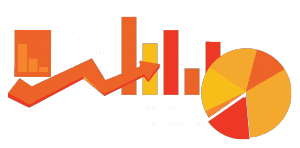 I recently subjected colleagues to a word-association exercise. The word was “Analytics.” As you can imagine, responses included “Data,” “Metrics” and “Measurement,” emphasizing the stereotypical view that analytics lives in an impenetrable realm of numbers, more numbers and just numbers.
I recently subjected colleagues to a word-association exercise. The word was “Analytics.” As you can imagine, responses included “Data,” “Metrics” and “Measurement,” emphasizing the stereotypical view that analytics lives in an impenetrable realm of numbers, more numbers and just numbers.
As I am a Strategic Planner, I found this exercise dispiriting. Corporate America has been extolling the virtues of analytics as supposedly critical to strategic business decisions and corporate success, yet it’s still seen and used in a very restricted way. I think it’s a travesty. It’s time for analytics to have its moment in the sun, not just as the stats professor but as the hip dude/bro/sis it actually is.
In my experience, analytics is used in most companies today in two ways:
1. “Real time” application to improve the performance of marketing programs at an execution level. For example, measuring click-throughs on banner ads, and learning what’s working and what isn’t. This results in devising and tailoring versions of the message more optimally for the specific target audience. This approach involves a lot of instantaneous “if-then” modeling and results in better click rates and sales at the end of the process.
2. “Batch” approach where the output is the generation of reports. These reports are for evaluating marketing programs – answering questions like, “How did my social media campaign perform in the last three weeks?” Or, more generally, “How did our marketing investment do over the product launch time period?”
In both these approaches analytics is used in a rote fashion, un-imaginatively … as though data just HAS to be handled in a boring “rear-view-mirror” way. But it doesn’t have to be. Analytics can provide strategic guidance for the future. Also, analytics can be as simple, or as sophisticated, as we want to make them.
So, partly with the intention of removing the fear-factor associated with the very notion of analytics, here is a basic example of how simple deductive reasoning, combined with some commonly-available data sets (the US Census, IRI etc.) can result in surprisingly accurate demand estimation and media budgeting.
For a potential client looking to market a new food product in the USA, we had to estimate the current user base and the expected impact of communication in the absence of any company-audited or otherwise reliable data. So this is how we went about it (numbers have been changed to protect the innocent – after all, our intention is just to illustrate the point):
The market size for the product is $500MM. We had been asked to focus on the top 20 cities in the USA, which accounted for 50% of consumption, amounting to $250MM. And from the RFP, we found that consumption averaged out to around 10 units per year (assuming equal distribution across heavy/medium/light users).
Our next step was to bring all this down into the daily life of the common consumer. And what’s more “daily life” than Wal-Mart? On the Wal-Mart website, the product cost around $5.00. At 10 units per year, that made around $50 per user per year, meaning that the user base in the metrics was 250MM/50 = 5MM users.
Therefore, 40% of this (our client’s market share) = 2MM users. So this was our user base.
As a cross-check, we compared this number against the KMO (Ketchum Media Optimizer) we had run for this category. What did we come up with? 2MM consumers! Simple enough so far? It gets better.
We used this number as the foundation for the next step: media budgeting. Our media partners told us that the client’s media budget would garner roughly 150MM impressions during the campaign period. Based on a conversion of 15 to 1 for impressions to newly familiar consumers compiled from several sources, this equates to 10 MM newly familiar consumers. Further, we know from a variety of food, beverage and alcohol studies done by Ketchum, that the average conversion of “newly aware” consumers to actual buyers, is about 15%. Therefore, we would expect an increase of 1.50MM (15% of 10MM) consumers in all of the U.S.
Now (as you recall) 50% of these would be in our targeted top-20 US markets. So, we are looking at adding roughly 750,000 consumers. Adding this number to the current base as calculated above, we conceived that the net increase in households would be from 2.0MM to 2.75MM in the target markets.
At an average consumer spend of $50/year, this equates to $37.5MM in new sales. This assumes, of course, that overall market dynamics, including competitive activity, are unchanged and all the increment accrues to our client. However, if we conservatively assume that our client’s sales increase will mirror current market share (40%), we are looking at new sales of $15MM for our client.
The key point is this: even if these numbers are not exactly accurate, the process shows how simple, back-of-envelope calculations provide us the order of magnitudes to arm us for smart conversations with our clients. In a business atmosphere where we are challenged to deliver results every day, who among you wouldn’t like to go to clients with a calculation like this?
This example emphasizes that analytics is not a frightening, impenetrable thing. It’s about what we want out of the data; it is subservient to our strategic intent and approach. And best of all? It’s easy to get started.


